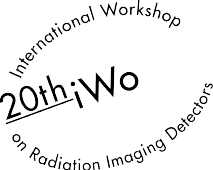Speaker
Description
Incineration of the municipal solid waste (MSW) is the most efficient way in waste management, because of the large reduction in volume and high energy recovery. According to European Commission, already in 2006, the EU-15 countries were treating approximately 20 - 25% of their MSW by incineration, with an anticipation of a massive expansion over the following years. After the incineration process; ash is produced along with flue gas and heat. The ash contains mostly inorganic components and, can be spread into the atmosphere by the flue gas. At the final stage the ash is dumped into landfills, and its contents can be washed away and carried to our natural water reservoir by the rain water. Some of the contents in the ash are hazardous to health and the environment. Therefore, it is important to routinely monitor the constituents in the ash, and clean it before abandonment.
In this work, X-ray fluorescence (XRF) measurements have been conducted in order to measure Chromium (Cr), Molybdenum (Mo) and Cadmium (Cd) in ash, collected from the local incineration plant in Sundsvall. These elements have been on the focus of the study because of their carcinogenic properties and other severe effects on health. The concentrations of these elements in the ash are relatively lower than other elements, such as Iron. As a result, the fluorescence signal from these elements are very low in the spectra. For this reason, it is crucial to have good signal-noise-ratio (SNR) in the detection system in order to detect them with certainty. Due to the large range of fluorescence energies of the materials of interest, several filters and tube voltages have been used to optimize the performance for different elements. By doing this, a significant increase in the SNR has been observed, which led to more distinct detection of the aforementioned elements.




